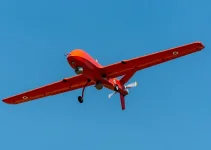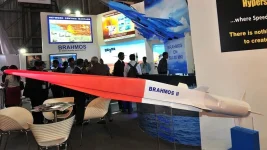- Views: 1K
- Replies: 4

India has taken a significant step towards bolstering its national defence capabilities with the successful testing of "Bhargavastra," a new counter-drone system developed by Economic Explosives Ltd (EEL), a subsidiary of the Solar Group.
This innovative system utilizes guided micro-missiles to neutralize the growing threat of unmanned aerial vehicles (UAVs), commonly known as drones, and their potential use in coordinated swarm attacks.
Bhargavastra boasts an impressive detection range, capable of identifying small incoming drones from over 6 kilometers away. Once detected, the system can neutralize these threats with remarkable precision using its guided micro-munitions. This capability is critical in today's security landscape where drones, both commercial and military, pose a significant risk.
Each micro-missile fired by the Bhargavastra system is designed to hit virtual and moving electronic targets at distances exceeding 2.5 kilometers. This demonstrates its effectiveness in combating fast-moving drones or those operating in coordinated swarms.
The system's multi-layered approach allows it to engage multiple targets simultaneously. With the capacity to launch more than 64 micro-missiles at once, Bhargavastra provides a robust defence against large-scale drone attacks, drawing comparisons to Israel's renowned Iron Dome system.
While the Iron Dome primarily focuses on intercepting short-range rockets, artillery, and mortars, Bhargavastra is specifically designed to counter the increasing threat of drones in modern warfare.
A key difference lies in their approach to cost-effectiveness. The Iron Dome, which uses Tamir interceptor missiles with a range of 4 to 70 kilometers, is a costly solution, with each interceptor estimated to cost between $50,000 and $100,000. In contrast, Bhargavastra's utilization of micro-missiles suggests a more economical approach to neutralizing the less expensive threat of drones, particularly in swarm formations.
By adding a new layer to India's existing air defence network, Bhargavastra has the potential to significantly reduce vulnerabilities to aerial threats, particularly along sensitive border regions where drone incursions have been reported.
The potential for cost-effective micro-missiles could allow for widespread deployment of Bhargavastra, enhancing security across a larger geographical area.
Furthermore, if Bhargavastra proves to be both reliable and cost-effective, it could, like the BrahMos missile, become a significant export product, strengthening India's position in the global defence market.


